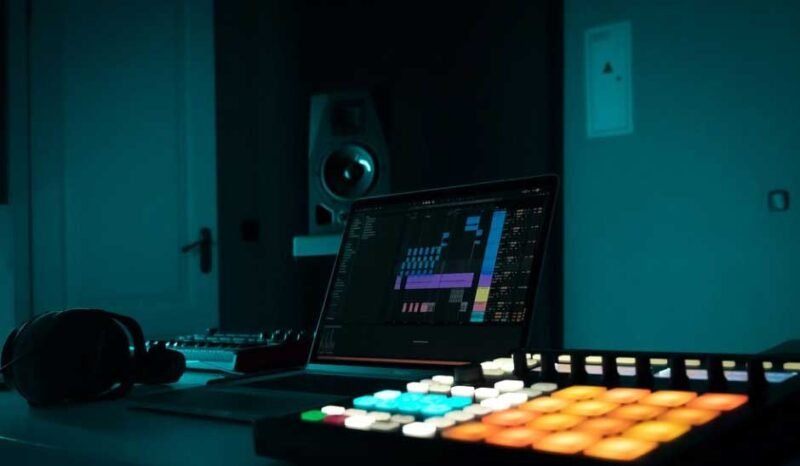The live sound industry has always been about creating unforgettable audio experiences whether it’s the booming bass at a music festival or the crisp clarity of a TED Talk. But in recent years, the role of visual media has grown alongside audio, becoming a critical part of how sound professionals teach, market, and collaborate. Among the most transformative of these visual tools is animation.
While it might seem like something reserved for cartoons or movie intros, animation has carved out a powerful niche in the audio world. From educational content and brand promotion to production planning and audience engagement, this once unlikely ally is helping live sound engineers do their jobs better and be seen and heard in more impactful ways.
Animation Meets Audio: An Unlikely but Perfect Pair
At first glance, animation and live sound may seem worlds apart. One is visual, crafted with lines, motion, and color. The other is sonic, all about waves, frequencies, and acoustics. But when these two elements combine, the results can be dynamic and incredibly effective.
Animations simplify complexity. Live audio systems are filled with technical intricacies: signal chains, mic placement, gain staging, routing, DSP settings, and so on. For newcomers and even intermediate learners, these concepts can be overwhelming. A well-designed animated explainer breaks down those intimidating processes into digestible visuals, allowing learners to follow the flow of information clearly and retain it longer.
Professional training programs and YouTube educators alike now regularly use animation to walk viewers through detailed concepts. It’s easier to show how a compressor works in real time or what feedback loops look like in a PA system when animated graphics guide the eye.
Engaging the Next Generation of Audio Professionals
For aspiring sound engineers, animation offers a more engaging way to learn. Traditional instruction textbooks or static diagrams can feel dry or confusing, especially for visual learners. Animated content brings theoretical knowledge to life, helping students understand how audio reacts in real world environments.
Beyond education, animations also provide a new medium for self promotion. Freelancers and small production companies often rely on social media to showcase their expertise. But raw footage of mixing desks and tangled cables can only go so far in holding attention. When engineers create animations to visually represent their setup process, stage plans, or soundchecks, they instantly make their work more appealing, understandable, and shareable.
These animations can be short Instagram reels showing the build out of a rig, or full fledged YouTube content outlining multi-day installations. By doing so, professionals not only explain their process but also build credibility and brand recognition in an increasingly competitive space.
Real-World Use Cases for Animation in Live Sound
Here are a few practical ways animation is being used in live sound:
- Stage Planning and Visualization: Audio teams can use animation to demonstrate how the sound system will be set up within a venue. This is especially helpful during the pre-production phase when collaborating with lighting designers, video teams, and venue managers. Animated layouts help everyone visualize equipment placement, coverage areas, and signal paths, reducing confusion and saving time on show day.
- Client Communication: When pitching services to clients, an animated overview of past events or an interactive tour of proposed setups can be far more persuasive than technical jargon. It bridges the gap between what audio engineers know and what clients understand.
- Troubleshooting Guides: Some production companies are now creating animated troubleshooting guides for their teams. These walkthroughs can illustrate how to identify ground loops, correct polarity issues, or reset digital mixers. Having a quick animated reference available during a live event can save valuable minutes under pressure.
- Gear Reviews and Product Demos: Animation is increasingly used to highlight features in gear reviews or tutorials. Whether it’s a plug in interface or a new wireless system, animating control movements or signal changes offers a clean and engaging way to demonstrate usage.
Making Animation Accessible
One of the barriers in the past was the difficulty and expense of creating animations. However, modern software tools have lowered that barrier dramatically. Today, even those without formal design training can build animations using drag and drop platforms, templates, or AI-assisted creation tools.
Platforms like Adobe After Effects still dominate the professional market, but tools such as Vyond, Animaker, and Canva’s animation features have made it easier for sound professionals to integrate motion graphics into their content strategies.
Even better, many of these platforms offer audio integration meaning sound engineers can sync animations with voice overs, music cues, or real time sound effects, creating a truly immersive learning or marketing experience.
Looking Ahead: The Future of Audio is Visual
As the live sound industry continues to evolve, so too will the tools it uses to operate and communicate. Animation, once considered an outside influence, is becoming a cornerstone of how knowledge is transferred, how stories are told, and how sound professionals connect with their audiences.
From simplifying technical knowledge to boosting personal brands, the ability to integrate motion and audio opens new doors in education, content creation, and business growth. Live sound is no longer just about what people hear it’s about how they see and understand the process behind the sound.
Whether you’re training the next generation of engineers or just want to better showcase your expertise, adding animation to your toolkit might be the smartest move you make this year.








